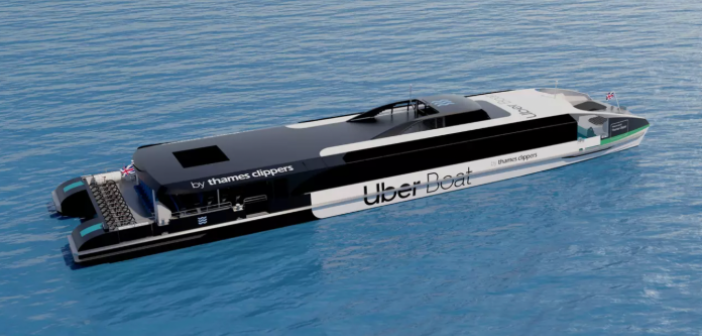Uber Boat by Thames Clippers is building the UK’s first hybrid high speed passenger ferries, set to launch in autumn 2022 and spring 2023.
The design of the two new vessels, being built at Wight Shipyard on the Isle of Wight, will allow them to operate solely on battery power while transporting commuters and sightseers through central London. The vehicles will recharge while using biofuelled power outside of the central stretch.
The technology is not reliant on shore-based charging; the new boats will use excess power from the biofuelled engines to re-charge the batteries.
According to Uber Boat, the new vessels push the boundaries in catamaran design to deliver a future-friendly option that can be made even greener as and when technology allows. As well as being the city’s most eco-friendly passenger boats, these will be Uber Boat by Thames Clippers’ quietest vessels.
“After the challenges of the last two years that covid has set upon businesses, in particular in the transport sector, I’m extremely excited to be increasing our capacity to meet the demands of our customers and partners,” said Sean Collins, Uber Boat by Thames Clippers’ co-founder and CEO.
“This development in technology has enabled us to take the first major steps to meet our future environmental vision.
“For over 20 years we have been at the forefront of innovation for the river marine sector. We are committed to supporting the sustainable growth, infrastructure and economic development on and around the river to endorse the river’s importance to London as a form of transport.”
Uber Boat by Thames Clippers has committed to achieving net zero with all new builds by 2025 and for its wider fleet, infrastructure and environmental footprint by 2040.
Collins continued: “We’re looking ahead with this hybrid design, ensuring easy conversion to green hydrogen or another renewable energy source – something we’re also focusing heavily on with the new projects we’re undertaking thanks to recent DfT funding. It is the next step in our strategy to net zero and, ultimately, tailpipe zero.”





